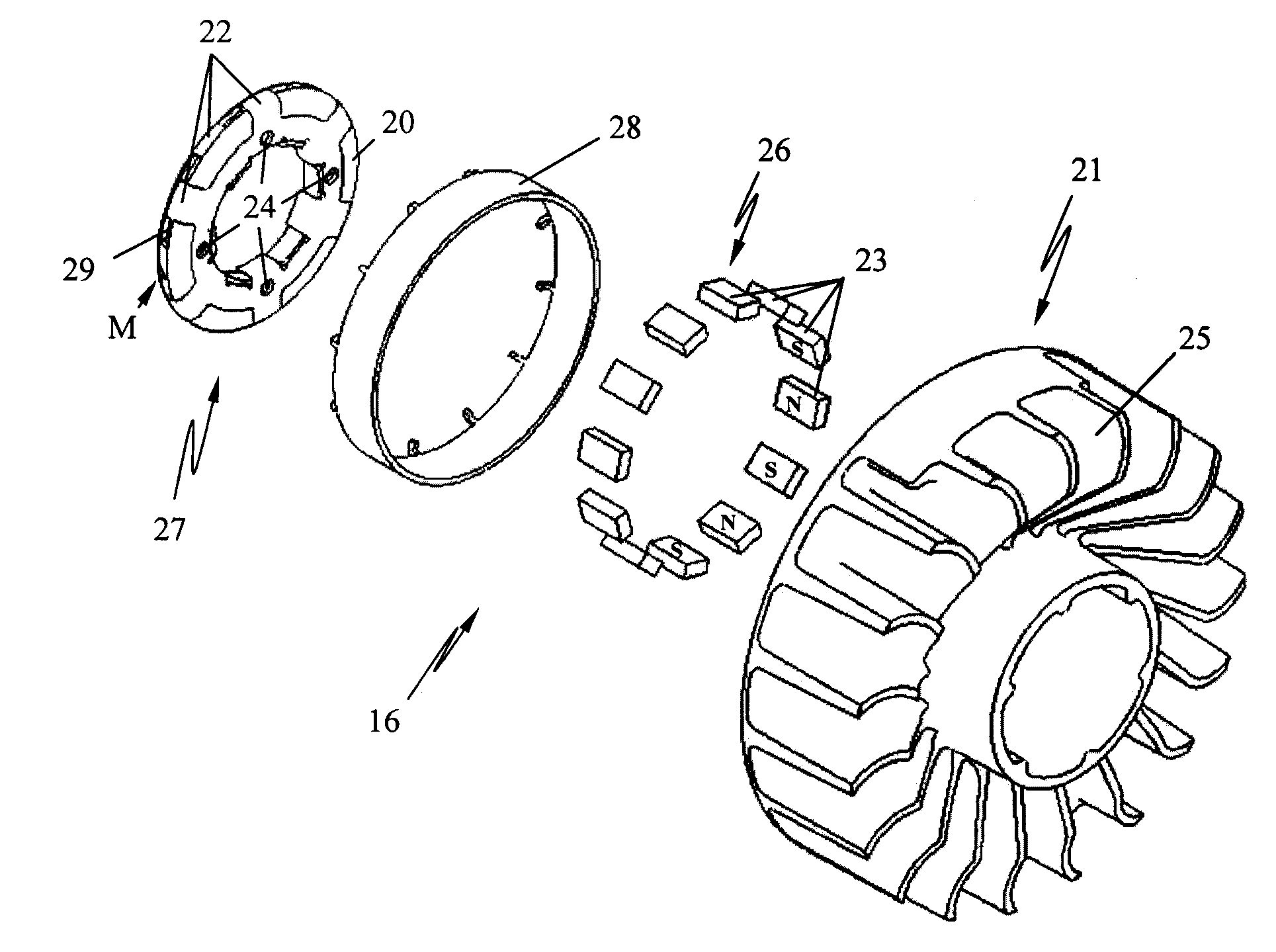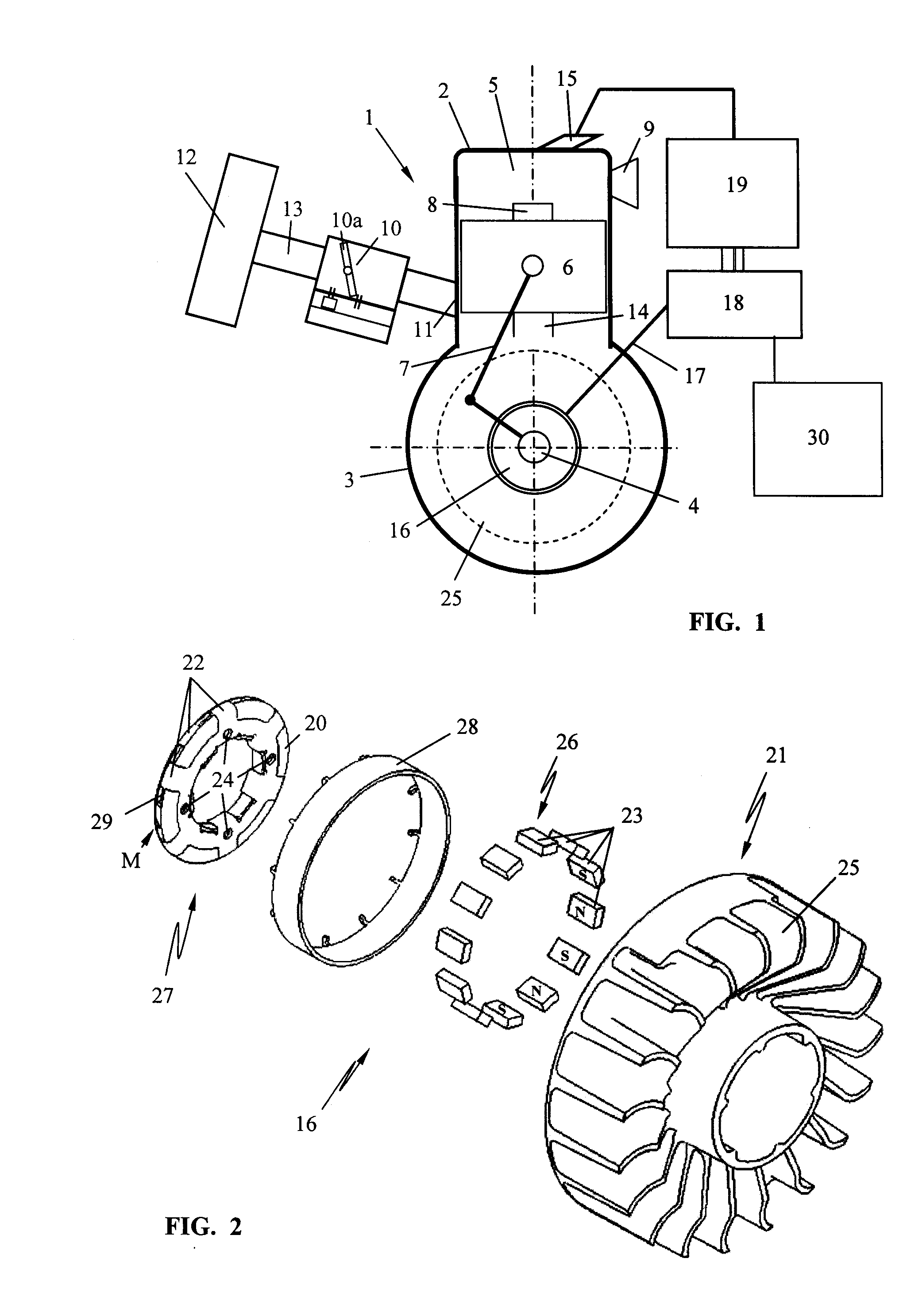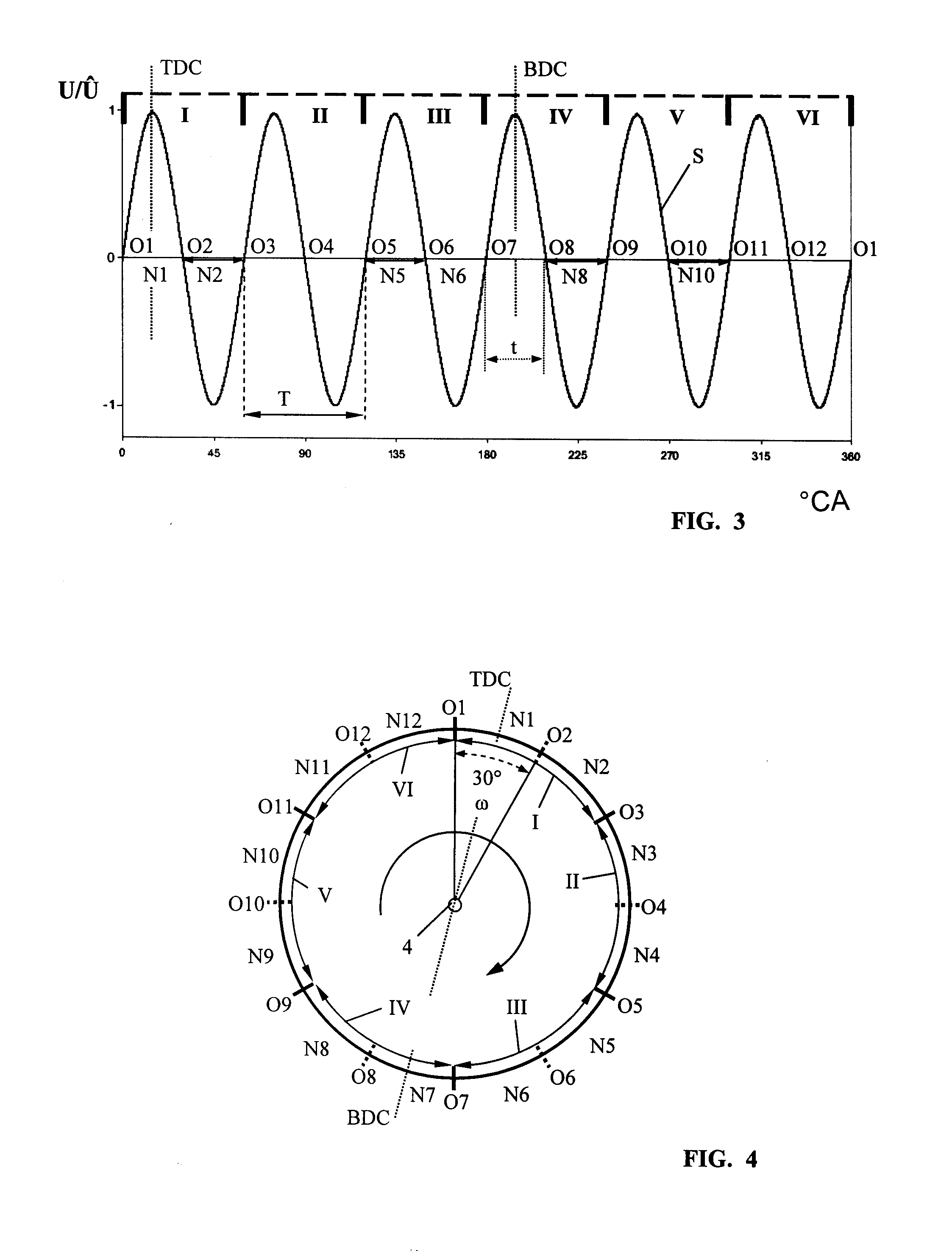Method for Detecting Operating Parameters of a Power Tool Comprising an Internal Combustion Engine
a technology of power tools and operating parameters, which is applied in the direction of machines/engines, amplifier modifications to reduce noise influence, and apparatus for force/torque/work measurement, etc., can solve the problems of thermal loads, high cost, and complex technology of sensors, and achieve quick determination of crankshaft angle position and crankshaft angle position position. the effect of speeding up the determination speed
- Summary
- Abstract
- Description
- Claims
- Application Information
AI Technical Summary
Benefits of technology
Problems solved by technology
Method used
Image
Examples
Embodiment Construction
[0034]The schematic illustration of FIG. 1 illustrates a single-cylinder internal combustion engine 1, in particular a two-stroke engine. The method according to the invention is however not limited to the use in a single-cylinder or multi-cylinder two-stroke engine. The method can also be used for detecting operating parameters for a single-cylinder or multi-cylinder four-stroke engine or a similar reciprocating piston engine.
[0035]FIG. 1 shows the internal combustion engine 1 comprised of a cylinder 2 and crankcase 3 in which a crankshaft 4 is supported rotatably. In the cylinder 2 a combustion chamber 5 is formed that is delimited by a reciprocating piston 6. The piston 6 is connected by means of connecting rod 7 to crankshaft 4 in the crankcase 3 and drives the crankshaft 4 in rotation. In the illustrated embodiment, an intake 8 for combustion air opens into the combustion chamber 5 wherein the intake 8 is the port of a transfer passage 14. Moreover, an exhaust 9 is provided thr...
PUM
 Login to View More
Login to View More Abstract
Description
Claims
Application Information
 Login to View More
Login to View More - R&D
- Intellectual Property
- Life Sciences
- Materials
- Tech Scout
- Unparalleled Data Quality
- Higher Quality Content
- 60% Fewer Hallucinations
Browse by: Latest US Patents, China's latest patents, Technical Efficacy Thesaurus, Application Domain, Technology Topic, Popular Technical Reports.
© 2025 PatSnap. All rights reserved.Legal|Privacy policy|Modern Slavery Act Transparency Statement|Sitemap|About US| Contact US: help@patsnap.com



